15 Splash-Tastic Water Play for Kids: Fun, Safe & Budget-Friendly Ideas
The best part? Most of these activities use items you already have at home, making them perfect for last-minute entertainment on hot days. Let’s dive into the wonderful world of water play and discover how simple activities can create lasting memories and valuable learning experiences.
The Benefits of Water Play for Kids
Water play is more than just fun—it’s a powerful tool for child development. When children engage with water, they’re actually building crucial skills across multiple developmental areas. Here’s why water play deserves a regular spot in your child’s routine:
Physical Development
- Enhances fine motor skills through pouring, squeezing, and transferring water
- Develops hand-eye coordination with scooping and aiming activities
- Builds gross motor skills when carrying buckets or running through sprinklers
Cognitive Growth
- Introduces scientific concepts like floating, sinking, and absorption
- Encourages problem-solving through experimentation
- Develops mathematical thinking with measuring, comparing, and estimating
Sensory Development
- Provides rich tactile experiences with different water temperatures and textures
- Stimulates multiple senses simultaneously (touch, sight, sound)
- Offers calming sensory input that can help regulate emotions
Social and Emotional Skills
- Creates opportunities for cooperative play and sharing
- Builds language skills through descriptive vocabulary
- Provides a joyful, low-pressure environment for self-expression
Outdoor Water Play Activities
When the sun is shining, take the fun (and potential mess) outside with these engaging water play ideas that are perfect for backyards, patios, or even driveways.
1. DIY Splash Pad Adventure
Age Group: 1-6 years
Materials Needed:
- Plastic tarp or shower curtain
- Garden hose with sprinkler attachment
- Pool noodles (optional)
Learning Focus: Gross motor development, sensory exploration
Instructions:
- Lay a plastic tarp or old shower curtain on a flat area of your yard
- Secure the edges with rocks or pool noodles to create a border
- Set up a sprinkler to spray over the tarp area
- Let children run, slide, and splash in their homemade splash pad
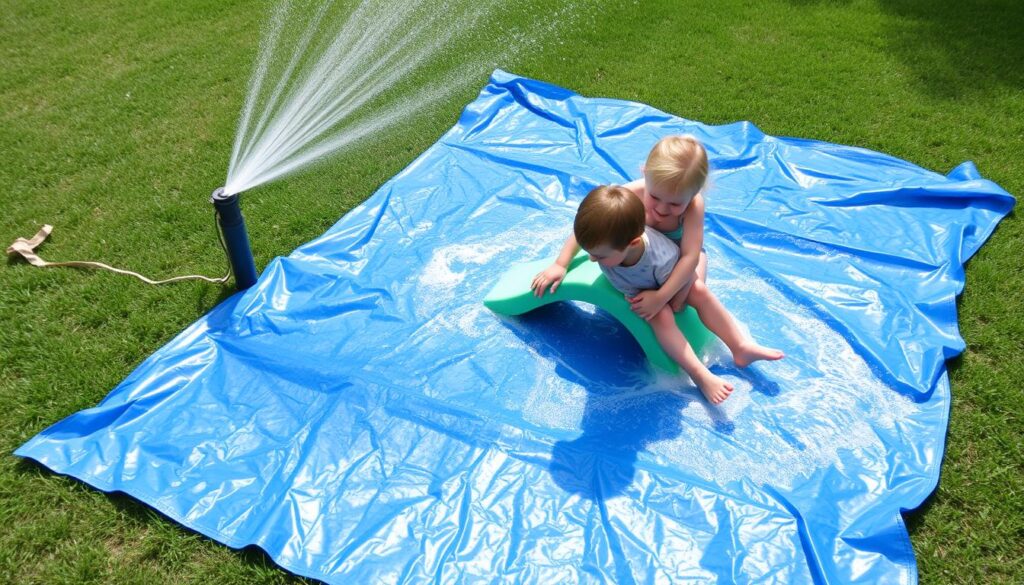
2. Sponge Toss Olympics
Age Group: 2-8 years
Materials Needed:
- Large sponges (cut into smaller pieces)
- Buckets or containers
- Chalk for target drawing
Learning Focus: Hand-eye coordination, gross motor skills
Instructions:
- Fill a large bucket with water and place several sponges inside
- Set up empty buckets or draw chalk targets at varying distances
- Have children soak the sponges and throw them at the targets
- Count points for successful throws to add a math component
3. Color Mixing Water Station
Age Group: 2-7 years
Materials Needed:
- Clear containers of various sizes
- Food coloring (primary colors)
- Measuring cups and spoons
- Eyedroppers or pipettes
Learning Focus: Color theory, fine motor skills, scientific observation
Instructions:
- Fill several clear containers with water
- Add different food coloring to separate containers
- Provide empty containers, measuring tools, and eyedroppers
- Let children experiment with mixing colors and transferring water
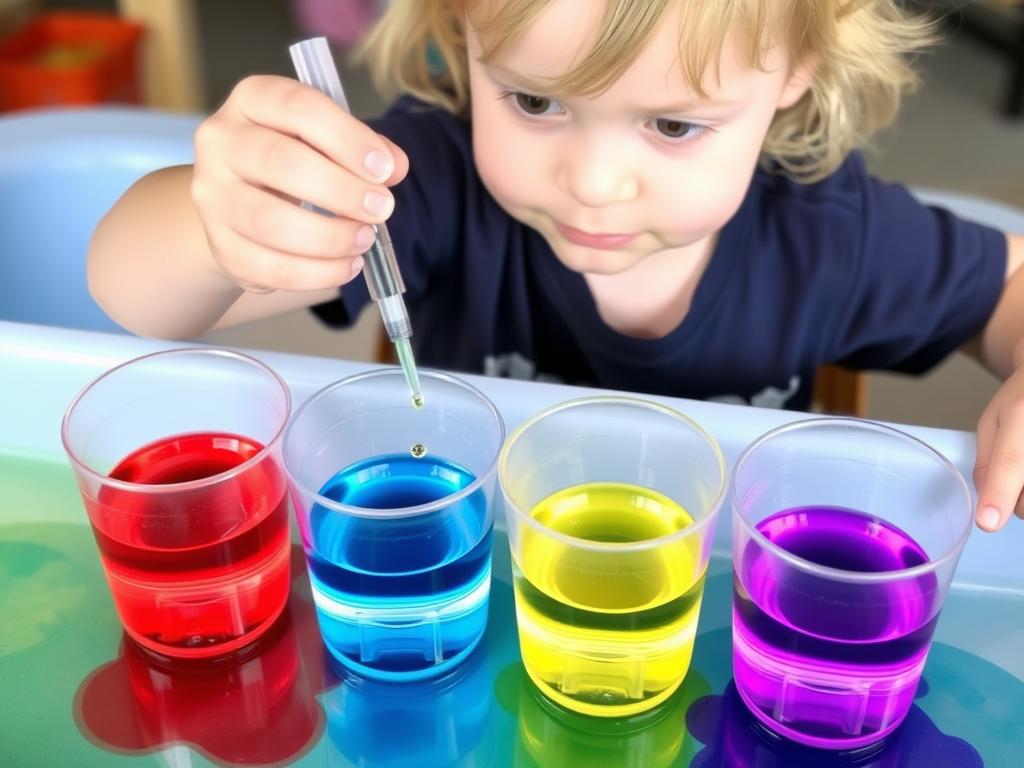
4. Ice Block Treasure Hunt
Age Group: 2-8 years
Materials Needed:
- Large container for freezing
- Small waterproof toys or nature items
- Warm water, salt, and tools for “excavation”
Learning Focus: Scientific concepts, problem-solving, patience
Instructions:
- Place small toys or objects in a large container
- Fill with water and freeze overnight
- Remove the ice block and place it in a water table or large bin
- Provide tools like spray bottles with warm water, salt shakers, and small hammers for excavating the treasures
5. Water Painting Masterpieces
Age Group: 1-8 years
Materials Needed:
- Paintbrushes of various sizes
- Buckets of water
- Fence, sidewalk, or other outdoor surface
Learning Focus: Creativity, fine motor skills, impermanence concepts
Instructions:
- Fill containers with plain water
- Provide various sizes of paintbrushes
- Let children “paint” on fences, sidewalks, or other surfaces
- Watch as the sun dries their creations, teaching about evaporation
Indoor Water Play Ideas
Don’t let rainy days or limited outdoor space stop the fun! These contained water play activities are perfect for indoor exploration with minimal mess.
6. Sink or Float Science Lab
Age Group: 2-8 years
Materials Needed:
- Large plastic bin or bathtub
- Collection of household objects
- Paper for recording predictions
Learning Focus: Scientific method, prediction skills, properties of matter
Instructions:
- Fill a container with water
- Gather various objects (cork, metal spoon, plastic toy, rock, etc.)
- Have children predict whether each item will sink or float
- Test each object and discuss why some float while others sink
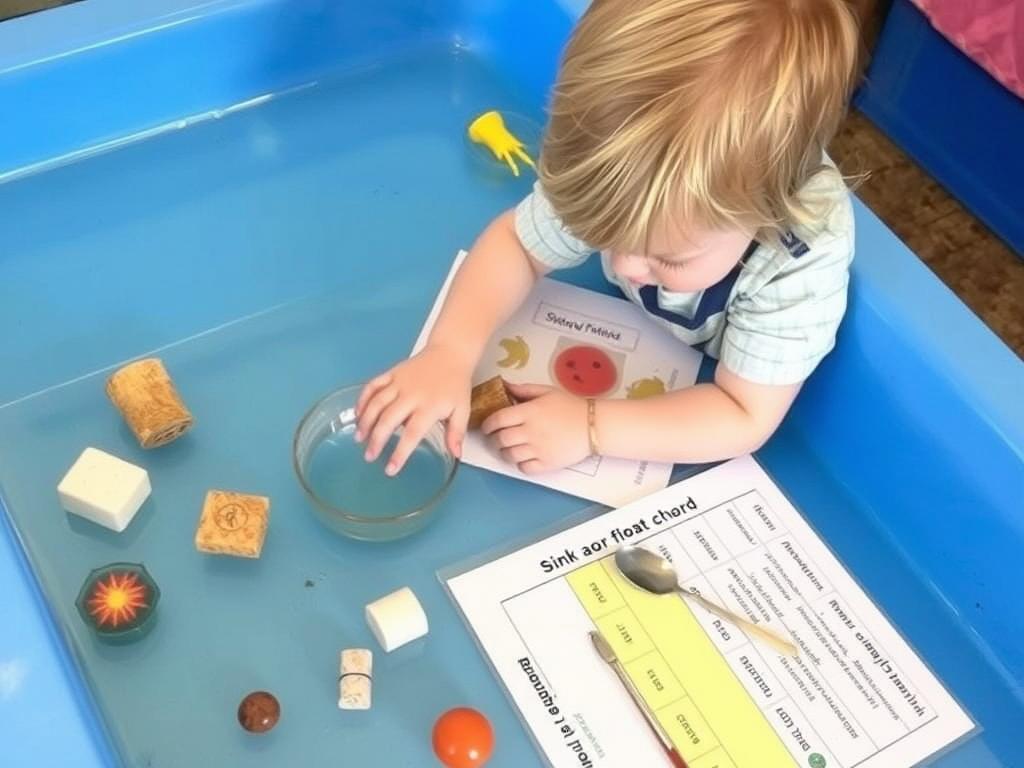
7. Sensory Water Bins
Age Group: 1-6 years
Materials Needed:
- Plastic storage container
- Water and sensory additions (see ideas)
- Scoops, cups, and funnels
- Towels for containment
Learning Focus: Sensory exploration, fine motor skills, vocabulary development
Instructions:
- Fill a container with 2-3 inches of water
- Add sensory elements like: sliced citrus fruits, lavender sprigs, food coloring, glitter, or small amounts of dish soap for bubbles
- Include tools for scooping, pouring, and transferring
- Place on a towel or splash mat for easy cleanup
8. Bathtub Car Wash
Age Group: 1-5 years
Materials Needed:
- Plastic vehicles or waterproof toys
- Small sponges and soft brushes
- Mild soap (optional)
Learning Focus: Practical life skills, fine motor development, responsibility
Instructions:
- Fill the bathtub with a small amount of water
- Add toy cars, animals, or other waterproof toys
- Provide small sponges, brushes, and a little soap
- Let children wash, rinse, and “detail” their toys
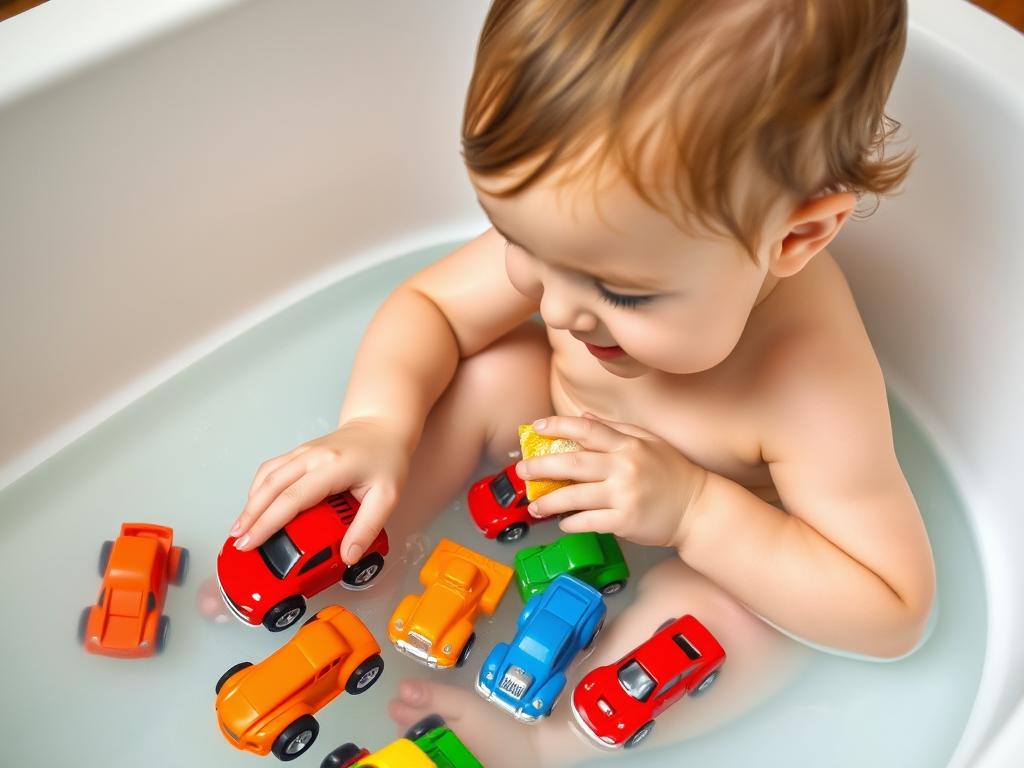
9. Potion Making Station
Age Group: 3-8 years
Materials Needed:
- Clear containers and test tubes
- Water, food coloring, glitter
- Natural ingredients (herbs, flower petals)
- Measuring spoons and eyedroppers
Learning Focus: Creative thinking, measurement, sensory exploration
Instructions:
- Set up a “potion lab” with various containers
- Provide water, food coloring, and safe ingredients
- Add measuring tools and mixing utensils
- Encourage children to create and name their magical concoctions
10. Water Transfer Challenge
Age Group: 2-6 years
Materials Needed:
- Various containers and tools
- Sponges, basters, pipettes
- Towels for spills
Learning Focus: Fine motor skills, hand-eye coordination, volume concepts
Instructions:
- Fill one container with water
- Provide various tools for transferring water (sponges, turkey basters, spoons, funnels)
- Challenge children to move water from one container to another using different tools
- For older children, add measurement markings to discuss volume
Water Play Ideas for Toddlers and Preschoolers
These activities are specially designed for our youngest water explorers, with extra attention to safety and simplicity while still providing rich sensory experiences.
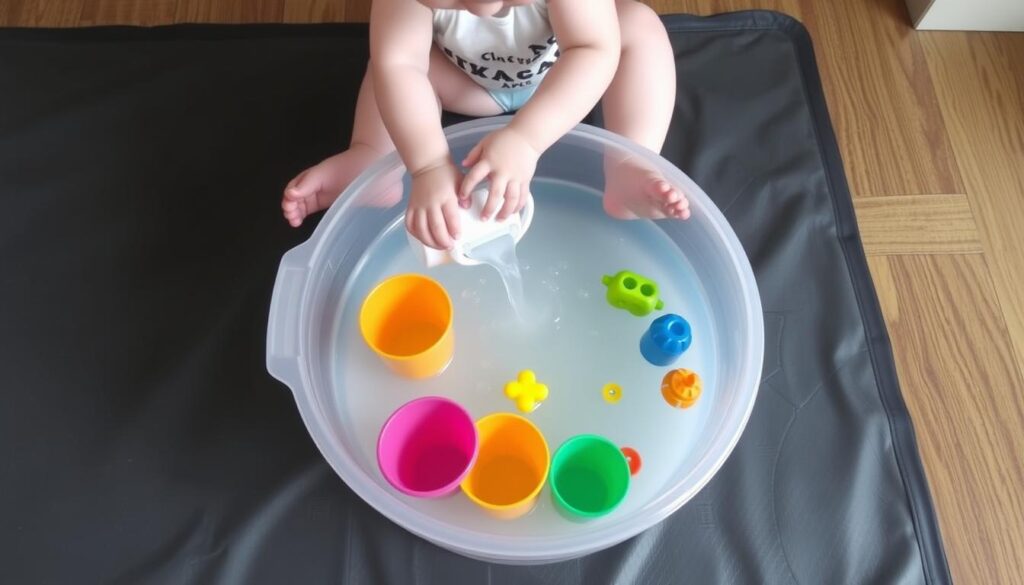
11. Squeeze Bottle Fun
Age Group: 1-3 years
Materials Needed:
- Clean, empty squeeze bottles
- Shallow water bin
- Waterproof targets (optional)
Learning Focus: Hand strength, cause and effect, fine motor skills
Instructions:
- Fill clean squeeze bottles (ketchup bottles, shampoo bottles) with water
- Set up a shallow bin or take outside
- Let toddlers practice squeezing to release water
- Add floating toys as targets for more challenge
12. Water Painting with Nature
Age Group: 1-4 years
Materials Needed:
- Natural “paintbrushes” (flowers, leaves, pine branches)
- Container of water
- Dark-colored sidewalk or fence
Learning Focus: Nature connection, cause and effect, sensory exploration
Instructions:
- Collect natural items that can hold and transfer water
- Dip items in water
- Use them to “paint” on surfaces
- Observe the different patterns each natural tool creates
13. Washing Baby Dolls
Age Group: 1-4 years
Materials Needed:
- Waterproof dolls
- Small tub of water
- Washcloths and mild soap
Learning Focus: Nurturing skills, practical life skills, empathy
Instructions:
- Set up a small bathing station for dolls
- Provide washcloths, small towels, and mild soap
- Show children how to gently wash and dry their dolls
- Encourage pretend play around bath time routines
14. Watering Plants Helper
Age Group: 1-5 years
Materials Needed:
- Child-sized watering can
- Indoor or outdoor plants
- Water source
Learning Focus: Responsibility, plant care knowledge, pouring skills
Instructions:
- Fill a small watering can with an appropriate amount of water
- Show children how to carefully water plants
- Discuss how plants drink water just like people
- Make it a regular responsibility they can look forward to
15. Bubble Whisking
Age Group: 1-4 years
Materials Needed:
- Shallow bin or bowl
- Water with a drop of mild dish soap
- Kitchen whisk
Learning Focus: Cause and effect, fine motor skills, sensory play
Instructions:
- Fill a container with water and add a small amount of dish soap
- Demonstrate how to use a whisk to create bubbles
- Let children whisk to create their own bubbles
- Add food coloring for colored bubbles (optional)
Water Play Safety Tips
Always supervise children during water play activities, no matter how shallow the water. Even small amounts of water can pose drowning risks for young children.
Essential Safety Precautions
- Never leave children unattended around water, even for a moment
- Empty all water containers immediately after play
- Use non-slip mats under indoor water play stations
- Keep electrical devices away from water play areas
- Apply sunscreen for outdoor water play, even on cloudy days
Making Water Play Accessible
- Create clear boundaries around water play areas
- Use shallow containers for younger children
- Consider seated water play for children with mobility challenges
- Provide appropriate support for children who need it
- Ensure water temperature is comfortable (room temperature or slightly warmer)
Frequently Asked Questions About Water Play for Kids
At what age can children start water play?
Children can begin exploring water play as early as 6 months with appropriate supervision. For babies, start with very shallow water in a secure seat. As children grow, gradually introduce more complex water activities that match their developmental abilities.
How can I minimize mess during indoor water play?
Set clear boundaries by using shower curtains or plastic tablecloths under play areas. Limit water amounts, use containers with high sides, provide towels nearby, and establish simple cleanup routines. Having children help with cleanup turns it into part of the activity!
What are the best materials for water play tools?
Look for durable, BPA-free plastic or stainless steel tools. Kitchen items like measuring cups, funnels, and whisks work wonderfully. Natural materials like wooden scoops and bamboo cups add interesting textures but may need replacing more often. The best tools offer variety in how water can be manipulated.
How can I make water play more educational?
Add measurement tools and discuss volume concepts. Introduce vocabulary like “empty,” “full,” “float,” and “sink” during play. Ask open-ended questions about what children observe. For older children, introduce simple experiments with predictions and observations. Remember that child-led discovery often leads to the most meaningful learning.
Is water play appropriate year-round?
Absolutely! While outdoor water play might be seasonal depending on your climate, indoor water play can happen year-round. During colder months, focus on bathtub play, sink activities, or small sensory bins with warm water. Water play provides sensory experiences that benefit children in all seasons.
Make a Splash with Water Play!
Water play offers an incredible combination of fun, learning, and sensory exploration for children of all ages. From developing fine motor skills to understanding scientific concepts, the benefits extend far beyond just keeping cool on hot days. The best part is that you don’t need expensive equipment or elaborate setups—just water, a few simple tools, and your supervision.
Remember that the most valuable aspect of water play is the opportunity for open-ended exploration. While the activities in this guide provide structure, don’t be afraid to follow your child’s lead and see where their curiosity takes them. Some of the most meaningful learning happens when children are free to experiment and discover at their own pace.
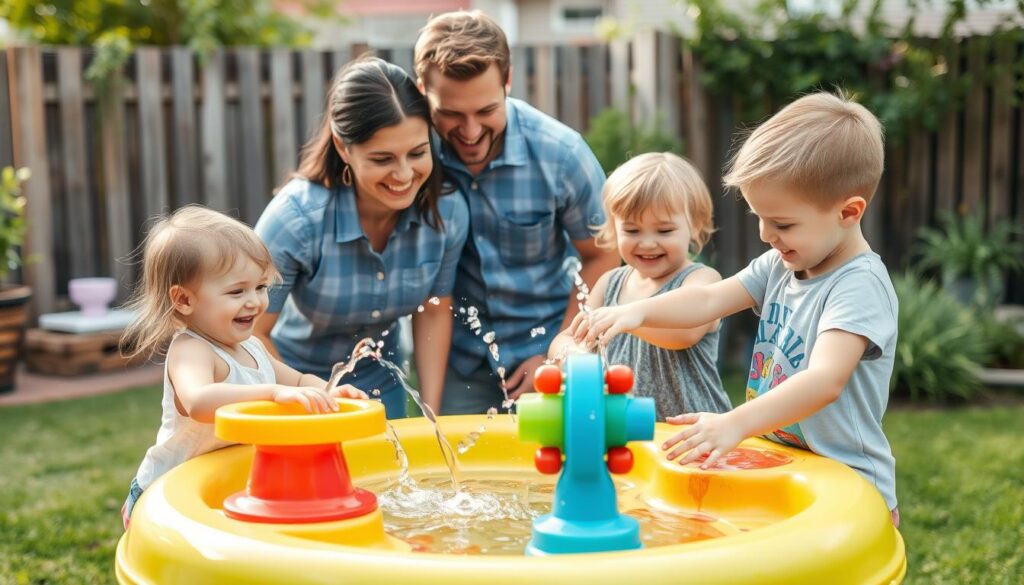

Eduard Kingly is a travel and lifestyle content creator with a focus on personal development and education. He combines firsthand travel experiences with research-driven insights to guide readers in discovering new places, building better habits, and pursuing meaningful learning.




